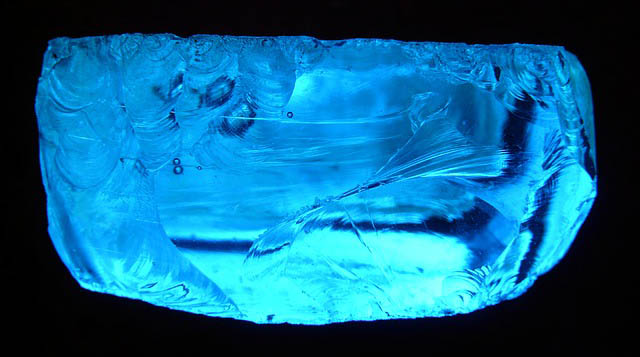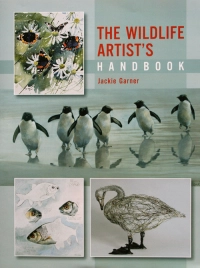
Ever had one of those months where everything happened at once and the months before and after were quiet? That’s May 2022 for me. So apologies for the lack of blog posts recently, but life got in the way.
Yesterday I squeezed in a trip to an exhibition with a friend. Several people had raved about this exhibition to me, so I was keen to see it.
The exhibition was A Thread of Light, celebrating three generations of kiln cast glass artists. (Try saying that after a few drinks!)
My knowledge of studio glass is minimal. I’m not certain that I could write a full page of A4 about it, so this was a whole new subject to me. While it’s not something that I ever expect to do, I’m a firm believer that there’s a lot of crossover between creative disciplines, so we can all learn from each other.
I didn’t know what to expect but I loved it. I came out buzzing, so much so that I’ve abandoned my half-written post on Glazing and am devoting today’s post to sharing my thoughts about the exhibition with you.
(The Glazing post isn’t actually abandoned, just delayed. I’ll post it next week.)
A Thread of Light exhibition
The exhibition is hosted by Stroud’s Museum in the Park and is part of an international tour, previously showing in Shanghai and Taiwan. (Well done to whoever had the job of packing each piece for global transport!)
The little town of Stroud may seem incongruous in such company, but five of the 11 featured artists are based in and around Stroud. Stroud itself has along tradition of arts and crafts, so the area’s cultural heritage is significant.
Although A Thread of Light highlights the work of 11 makers, all working in kiln cast glass, their methods are varied, resulting in a range of techniques and styles.

The main techniques used are:
- Kiln cast – cold glass is placed over a mould. Once heated, the glass melts and flows into the mold, then it cools and solidifies.
- Lost wax process – a model is made of wax and a mould built around it. Once heated, the model melts and leaves a cavity. Melted glass replaces the wax, and is then cooled so it solidifies.
- Pâte-de-verre – a technique using glass paste, which is applied to the inner surface of a negative mould.
Additionally the glass may be coloured, etched, fused, mirrored, slumped, polished, carved and engraved.
One of the first things I noticed about the exhibition was the sheer quality of every piece. I didn’t like everything – though I’d love to have given a home to some of them – but the superb quality was undeniable.
You can see the exhibition details and view some of the images here. Obviously photographs can’t take the place of the originals – you can’t beat experiencing the real thing – but it’ll give you a flavour of the work.
(Note: the images in this post aren’t from the exhibition, as those are copyrighted. I just thought you’d like some glass pictures to break up the text.)
My thoughts on A Thread of Light
The very first piece was on a plinth by the door and had immediate impact. Great positioning! It instantly made us think Wow! and we were excited to see the more of the exhibition. It’s so important to grab your viewers’ attentions from the outset so they want to see more.
It wasn’t even a dramatic shape, just a large rectangular block of glass, slightly shaped on opposite faces so that the reflections changed, disappeared and reappeared as we walked around. It had movement and it was unexpected.

As I said earlier, glass is not my thing. Never tried creating with it, though I know a couple of artists who work with the medium.
That said, I found the exhibition hugely interesting and there were parallels with my own art.
So my first take away is that we should always be open to new creative experiences. There’s much to learn from another artist’s approach, irrespective of medium. I’m much more open to glass as a creative medium now than I was before.
I particularly liked the element of surprise in the works. Due to the reflective nature of the medium, pieces looked very different depending on the angle of view. The effect was of changeability – views disappearing and reappearing as the viewer moved around the piece. One piece situated on a wall shone when viewed from low down. I felt there was always more to see.
Several of the pieces left me questioning what I was seeing. My initial thought was that a surface was full of holes, but closer study showed it was flat and polished. The “holes” were reflections from a different surface.
Contrasts of surfaces was important to many of the pieces. Polished facets next to rough or translucent surfaces created interest, as did changing lustres within a piece. Contrasts of texture is as applicable in any creative media as it is in glass.
I also liked the way some artists had created semi-opaque effects within the glass. I have no idea how that is possible, but the effect was beautiful and ethereal, as though veils had been suspended within the glass. I kept thinking “Wow! How have they done that?”. Mind blown!

Depth was an important part of many of the works. There were layers of transparent colour swirling and overlapping each other.
We can’t make physical depth with paint in the same way, but we can build up layers of transparent colour in watercolours, acrylics and oils.
I found myself thinking, “I could do that in this way in my work”. It wouldn’t look the sames, but it did inspire possibilities.
Perhaps because I’ve been thinking about glazing techniques in paint lately, this aspect appealed to me greatly.
One of the things I like about non-representational art is that viewers bring their own interpretation to it. “It reminds me of…”, “It makes me feel…”, “I can see…” are the types of comments you hear from visitors. Of course different people notice or imagine different things.
I found that the layers in one of the pieces made me think first of waves, then perspective of distant mountains and ammonite fossils, connections I might not otherwise have made. This also showed the importance of looking all around the piece, and from far and close up.
I visited the exhibition with a friend, though I may go again on my own. Viewing with someone is valuable, as their viewpoint and ideas may lead you to conclusions you may not reach on your own.
Yet I don’t always want to be with someone – my Falklands trip was a deliberate choice to go alone. I didn’t want the pressure of feeling a companion might be bored or want to move on somewhere else. As it is with exhibitions. It’s good to be free to take as much time as you need.

So there was much to enjoy about A Thread of Light. But what did I see that was less pleasing?
I would have liked to see some information about kiln cast glass techniques, even if it only directed me to look at particular websites. Many of the pieces made me thing “How did they do that?”, but there was nothing to give me any insight.
I’d also like to have known something of the process. Some of the labels mentioned preliminary sketches, and collaboration, so examples of that would have been interesting. It’s the kind of thing we can see at an open studio or residency, but less at an exhibition. Nevertheless, it’s worth considering when you are showing your work.
My biggest bugbear was the labelling. While I salute the clarity of the graphics, the actual content of the text was less helpful.
One in particular left both my friend and I scratching our heads. What on earth is she talking about? Too much jargon and too many words that would be unfamiliar to most of the visitors. I’ve been a practising artist for decades and I worked in an art museum for 15 years…yet I still didn’t understand what the artist was talking about.
Please, if you’re writing text for a public exhibition, consider your audience. Many of them won’t be either artists or familiar with your medium, especially if it’s unusual, like studio glass. If you must use terms specific to your medium on the labelling, provide a hand-held glossary that your visitors can carry around to help them understand. Otherwise jargon just creates an unnecessary barrier.
A Thread of Light had far more to commend it than quibble about. It has left me with renewed enthusiasm for experiencing other artists’ work, especially after Covid has forced us to stay at home for so long.
We can benefit so much from seeing how artists from other cultures and other media have achieved their aims. Some of it may be far from your own work, but there may be sparks of inspiration that are worth pursuing.
I encourage you to discover the exhibitions in your own area.


Fascinating – thanks for the link to the exhibit. 🙂
Glad you liked it. Thanks for your comment.